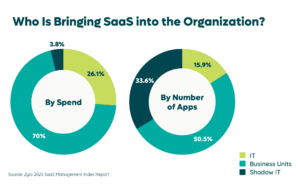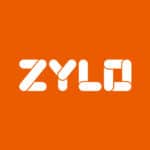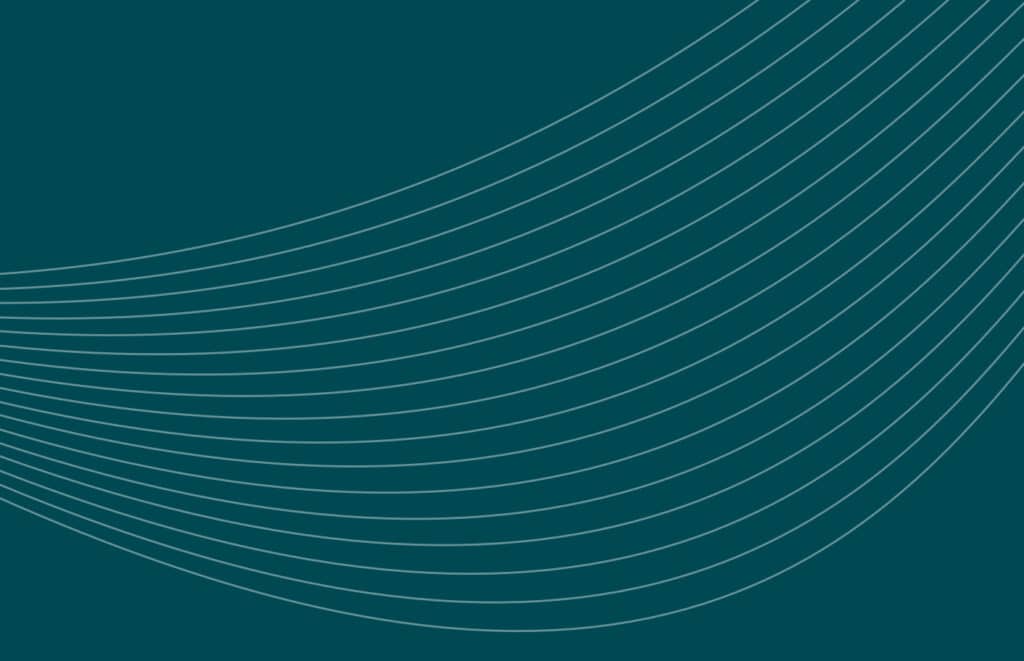Table of Contents
More than 10 years ago, venture capitalist Marc Andreessen predicted software would eat the world.
“My own theory is that we are in the middle of a dramatic and broad technological and economic shift in which software companies are poised to take over large swathes of the economy,” he said, mentioning at-the-time young companies like LinkedIn and Twitter.
He was obviously right. But now that prediction needs an update for 2024 and beyond: Software has eaten the world – and now SaaS is eating on-premises software. And rapidly!
According to IDC, more money was spent on SaaS than on-premises software in 2022, for the first time ever. And by 2026, SaaS spending is expected to comprise two-thirds of all enterprise application revenue.
Other data confirms this explosion in cloud-based SaaS software. In fact, Gartner predicts global SaaS spending to grow 19% to total $299B in 2025.

Bottom line: SaaS is an unstoppable force. It’s growing exponentially. It’s the future. Is your software asset management system keeping up? Now’s the time to get the ball rolling and establish the needed processes to effectively manage this ever-growing aspect of tech while keeping your software spending in check.
SaaS Presents New Challenges to Software Asset Management Systems
When it comes to tracking cloud apps in your software asset management system, you may need to rethink your approach, because SaaS brings an entirely separate set of challenges compared to on-premise software.
In many instances, these apps fly under the radar of your IT or procurement teams, which invites a wide range of unnecessary problems and security risks. Consider these three challenges to effective SaaS management:
Challenge 1: App Proliferation, aka SaaS Sprawl
Unlike the old-school, on-premise software, SaaS is extremely easy to purchase, install, and update — no IT help required. Because most SaaS purchases only require a credit card and internet connection, anyone in the organization becomes a potential SaaS buyer. It’s so easy that many enterprises fail to realize they employ over 660 SaaS tools on average, and underestimate the figure by nearly 2X – according to our SaaS Management Index.

Challenge 2: Decentralized Purchasing
It’s now so easy that individual employees and lines of business seek out and purchase the tools they need, often without a friendly heads-up to IT or procurement. Today, IT and SAM teams are responsible for just 16% of applications and 26% of SaaS spending.

Product-led growth strategies (offering a basic version of the software for free to acquire new customers — i.e. Spotify, Canva, Zoom, etc.) also contribute to employees bypassing typical IT protocols. Sure, it helps teams work faster and more efficiently, but it invites risk by bringing unvetted software into your organization.
Challenge 3: With SaaS, You Can’t “Set It & Forget It”
When it comes to effective SaaS management, you simply can’t “set it and forget it.” New software frequently enters the organization, and requires continual monitoring. In fact, a typical company will see at least six new applications enter its environment and three applications exit active use every 30 days.
The key to streamlining SaaS governance requires tracking all of your SaaS licenses in a single software asset management system. And clear data and insights makes it easier to shift your mindset from playing defense against software audits to proactively focusing on optimization efforts.
It’s Time to Transform Your Software Asset Management System
We’re quickly entering a new era of software asset management, one that requires continuous surveillance of the hundreds of tools that enter and exit your organization. When you think about “software,” you need to reflexively think about SaaS, because software looks fundamentally different today than just a few years ago.
Software asset management systems today just can’t keep up. And with SaaS quickly becoming the dominant form of software globally, you need to start now so you can reduce costs with better data, quickly make high-impact decisions, limit chargebacks, and see all of your software data in a central system of record.
Learn how a SaaS Management platform like Zylo can help Software Asset Management professionals take on the unique challenges of SaaS.
ABOUT THE AUTHOR

Zylo
Zylo is the leading enterprise SaaS management platform that transforms how companies manage and optimize the vast and accelerating number of cloud-based applications organizations rely on today. The platform provides one system of record for all cloud-based software purchased across a company, enabling customers to discover, manage, measure and optimize cloud investments with real-time insights into spend, utilization and feedback data.

